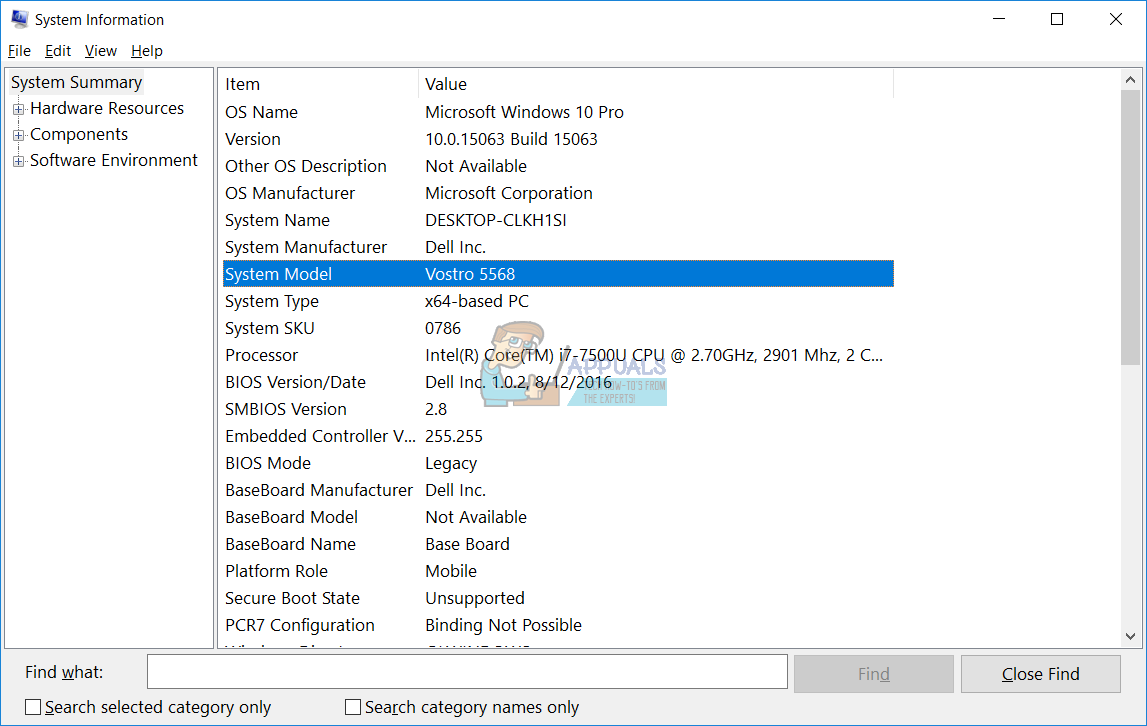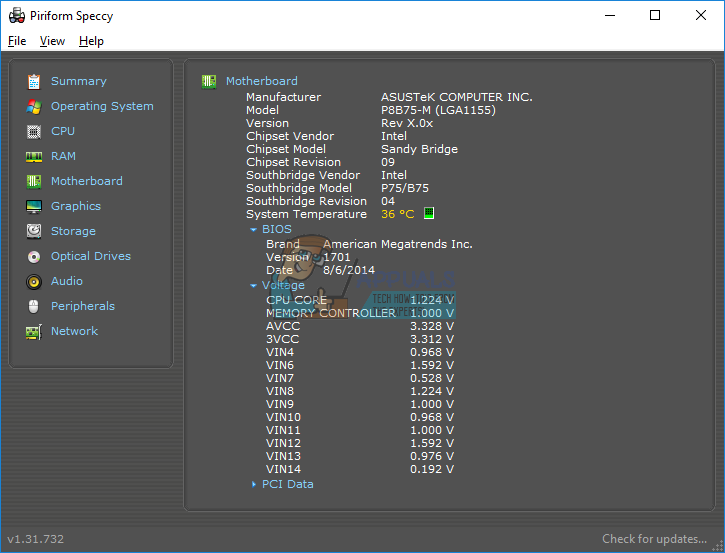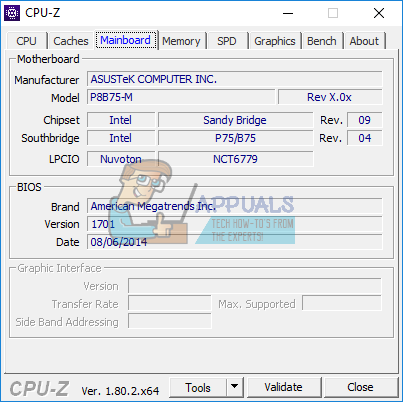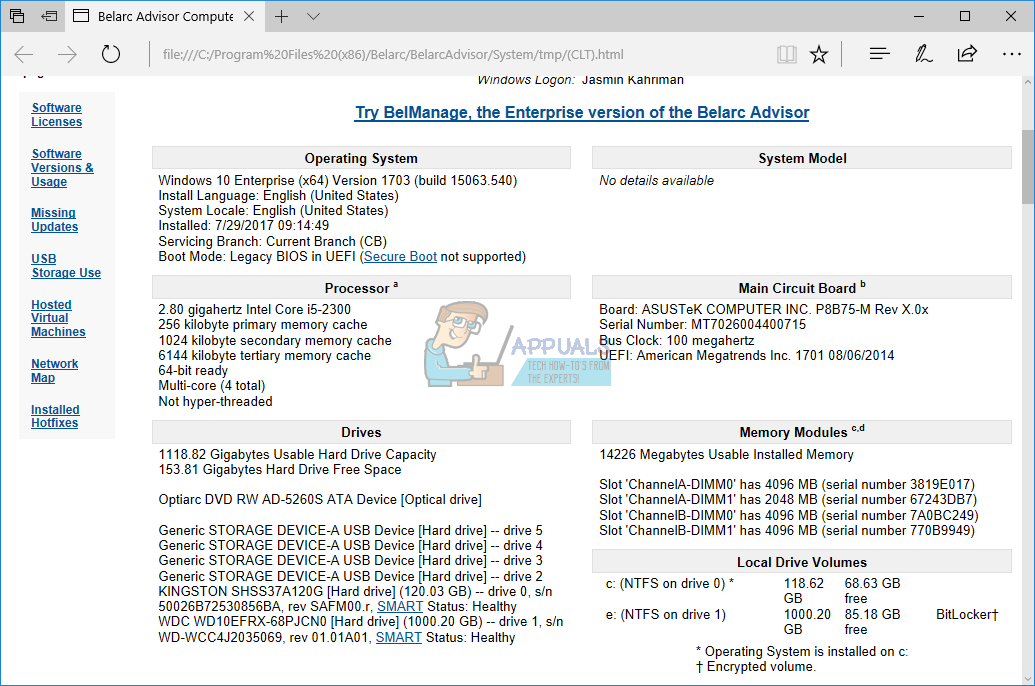- How to Find Out Your Motherboard Model?
- Method 1: Use Command Prompt
- Method 2: Use System Information (msinfo32)
- Method 3: Use Speccy
- Method 4: Use CPU-Z
- Method 5: Use Belarc Advisor
- Method 6: Use Spiceworks Inventory
- Method 7: Open the computer or notebook case
- Method 8: Visit vendor website
- Утилиты find и findstr — поиск через командную строку
- Утилита find командная строка
- Утилита FINDSTR командная строка
How to Find Out Your Motherboard Model?
I learned in school that motherboard is the heart of one machine. If the heart is not working properly, other components will not be able to run the heart. Based on that, the motherboard is the crucial hardware components of your machine. As a human, every motherboard has own name called model name.
There are different tools which can help you to find motherboard model. One of the easiest methods is to use tools which are already integrated into Windows. Also, there are third party tools which will help you to determine motherboard model.
Why should you need motherboard model? If you reinstalled your operating system, you will need to install motherboard drivers. You can not do it if you do not know your motherboard model. Also, if you want to upgrade your motherboard, you will need to check does motherboard support upgrade of hardware components. Next, in case your motherboard stopped to work due to hardware problems, you will need to replace it, but before that, you will need to know motherboard number.
We will represent you six different tools, including Command Prompt, System Information, Speccy, CPU-Z, Belarc Advisor and Spiceworks. These tools are mostly used by end users and IT Administrators. After you read the article, you will not need to search for another tool on the Internet.
All tools are compatible with operating systems from Windows XP to Windows 10, and from Windows Server 2003 to Windows Server 2016.
Method 1: Use Command Prompt
The easiest method to do something on Windows is by using applications or tool which are integrated into Windows. That means you do not need to download and run some applications and tools from the Internet. One of them is powerful Command Prompt which we used so many times in previous articles. In this method, we will show you how to find motherboard model by using Command Prompt on Windows 10 Pro. For a test purpose, we are using motherboard P8B75-M manufactured by ASUS.
- Hold Windows logo and press R
- Type cmd and press Enter to open Command Prompt
- Type wmic baseboard get product,Manufacturer,version,serialnumber and press Enter.
- Close Command Prompt
Method 2: Use System Information (msinfo32)
In this method, we will show you how to determine computer or notebook motherboard using tool System Information which is integrated into Windows, too. System Information is available since Windows 98, until now. Except for information about your motherboard, you can find so many details about your hardware components and operating system. There are few ways how can you run System Information, but we will show you one method which is compatible will all operating systems. In this method, we are using notebook Dell Vostro 5568 and Windows 10 Pro.
- Hold Windows logo and press R
- Type msinfo32 and press Enter to open System Information
- Select System Summary
- On the left side of the window, under Item navigate to SystemModel
- Close System Information
Method 3: Use Speccy
Speccy is the third party software developed by company Piriform. It provides details about your computer or notebook. Except for motherboard model, you can find all details about your machine. This tool is not integrated into Windows, and you will need to download it from the Internet. If you want to learn more about Speccy, please check this LINK. For a test purpose, we are using motherboard P8B75-M manufactured by ASUS.
- Open Internet browser (Google Chrome, Mozilla Firefox, Edge or other)
- Download Speccy from this LINK
- Install and run Speccy
- On the right side of the window choose Motherboard.
- Close Speccy
Method 4: Use CPU-Z
Almost every user heard for CPU-Z tool. CPU-Z is a freeware software which gathers information of your machine. If you want to learn more about CPU-Z please check this LINK. For a test purpose, we are using motherboard P8B75-M manufactured by ASUS.
- Open Internet browser (Google Chrome, Mozilla Firefox, Edge or other)
- Download CPU-Z from this LINK
- Install and run CPU-Z
- Choose Mainboard
- Close CPU-Z
Method 5: Use Belarc Advisor
Belarc Advisor is powerful software which provides you much more details than Speccy and CPU-Z. If you want to learn more information and what this software is offering to you, please check this LINK. For a test purpose, we are using motherboard P8B75-M manufactured by ASUS.
- Open Internet browser (Google Chrome, Mozilla Firefox, Edge and other)
- Download Belarc Advisor from this LINK
- Install and run Belarc Advisor
- On the right side of windows, please check System Model where you can find details about your machine.
- Close Belarc Advisor
Method 6: Use Spiceworks Inventory
If you are using more computers or notebooks in your home or business environment and you want to find motherboard models of all machines, you will need to use software which provides centralized inventory. This is not possible by using Speccy, CPU-Z or Belarc Advisor. By using them, you will lose so much time, because you will need to install software on every machine and check motherboard model. Do not worry, you will not need to do that. There are a lot of other applications available on the IT market which will help you to make an inventory of your infrastructure from one machine. One of them is Spiceworks Inventory tool. We are recommending you to open Spiceworks website on this LINK, where you can download and learn more about this product.
Method 7: Open the computer or notebook case
The easiest method to find motherboard model is to do it through software or some tools. But what if your machine is not working and you can not run any of the previous tools and applications? In that case, you will need to open the computer case and check motherboard number. In most cases vendors like Asus, Gigabyte, MSI, Asrock are stamping model name on the motherboard. If you do not have experience working with the computer case, we are recommending you to read user and service manuals which you can download on vendor website (brand name computer or computer case). Also, if you want to open notebook case, we are recommending you to read user and service manuals.
Method 8: Visit vendor website
If you do not want to open computer case or notebook case, there is another method which will help you to find system board model. Imagine, that you are using notebook HP 2000-2b19WM and you want to purchase a new motherboard. We are recommending you to open vendor’s website and find proper PDF document about your machine. In this case, you will need to open this LINK and Maintenance and Service Guide on this LINK. The same procedure is with brand name computers.
Утилиты find и findstr — поиск через командную строку
В этой статье мы с вами рассмотрим утилиту findstr и find командной строки, которые позволяет производить поиск строк в текстовом документе. Поиск через командную строку можно также настроить, используя шаблоны, которые настраиваются на основе регулярных выражений, но сперва, немного лирики…
В былые времена, когда я был еще полным чайником в компьютерах, мне пришлось услышать про волшебные “виртуальные диски”. В то время размер моего винчестера составлял 2 гигабайта, и на счету был каждый байт, я каждую картинки сжимал для экономии места, зато в системе был один фильм и одна игра “Age Of Empires 2”, я ее уже раз сто проходил. Так вот, я почему то решил, что “виртуальный диск”, это дополнительная память, которая может появится из воздуха… Где то два дня пытался всячески установить через Диспетчер устройств еще один винт на 500 метров, при том, что такого оборудования в системном блоке и подавно не было…
Утилита find командная строка
FIND [/V] [/C] [/N] [/I] [/OFF[LINE]] «искомые_значения» [[диск:][путь]имя_файла[ . ]]
И так, смотрим на описание ключей:
[/V] – произвести вывод всех строк, которые НЕ содержат заданной.
[/C] – выводится только общее число строк, содержащих заданную.
[/N] – Вывод номеров отображаемых строк.
[/I] – Поиск без учета регистра символов.
[/OFF[LINE]] – Не пропускать файлы с установленным атрибутом «Автономный».
«искомые_значения» – собственно, строчка, поиск которой производится из командной строки Windows
[[диск:][путь]имя_файла[ . ]] – тут мы прописываем один или несколько имен документов, в которых нужно произвести поиск через командную строку, можно использовать подстановочные знаки.
Хорошо, теперь давайте попробуем написать несколько примеров.
Создадим на диске D:\ папку TEST, в который благополучно поместим три файла с расширениями .pdf, .txt и .mf. Для начала попробуем найти слово «const» во всех документах с расширением txt:
FIND «const» D:\TEST\*.txt
На выходе мы получим следующую информацию:
———- D:TESTSEND_MAIL_DATA.VBS.TXT
соnst toMSg =»to@yandex.ru» ‘получатель
соnst fromMSg =»from@gmail.com» ‘отправитель
соnst subjMsg = «Администратор» ‘субъект
соnst sndUsr =» login» ‘логин
соnst sndPswd =»password» ‘пароль
cоnst smtpSrvr = «smtp.gmail.com» ‘почтовый сервер
———- D:TESTSEND_MAIL_TEXT.VBS.TXT
cоnst toMSg =»to@yandex.ru»
cоnst fromMSg =»from@gmail.com»
cоnst subjMsg = «Администратор»
cоnst sndUsr =» login»
сonst sndPswd =»password»
сonst smtpSrvr = «smtp.gmail.com»
Как видим, мы получили список всех тех строчек, где встречается искомое слово.
Теперь попробуем сделать поиск через командную строку слова “samsung” во всех pdf файлах:
FIND «samsung» D:\TEST\*.pdf
Слово «samsung» встречается в одном документе, но, утилита FІND найти его не смогла, стоит обратить внимание, что и стандартный поиск операционной системы Windows также ничего не нашел, видимо, Google в этом все же больше преуспел.
Теперь попробуем усложнить задачу. Дело в том, что Windows ищет фразу не только в контексте файла, но и в его свойствах. Посмотрим, будет ли утилита find командной строки Windows производить поиск из описания. Я специально, по одному из каждого типа файлов (.pdf, .txt и .mf) вставлю в описание фразу «Victoria Sanremo». И так, приступим:
FIND «Victoria Sanremo» D:\TEST\*.*
В результат выполнения команды find, командная строка ничего не нашла в свойствах документов. Кроме утилиты FІND, есть еще и CMD FINDSTR, которая обладает немного большими возможностями.
Утилита FINDSTR командная строка
Утилита CMD FINDSTR предоставляется возможность осуществить поиск текста через командную строку не только в одном файле, или группе документов заданных по шаблону, но и с возможностью загрузки готового списка. И так, прежде всего, давайте посмотрим на основной синтаксис.
FINDSTR [/B] [/E] [/L] [/R] [/S] [/I] [/X] [/V] [/N] [/M] [/O] [/P] [/F:файл][/C:строчка] [/G:файл] [/D:список_папок] [/A:цвета] [/OFF[LINE]] «искомые_значения»[[диск:][путь]имя_файла[ . ]]
/B – Данный ключ определяет поиск образца лишь в началах строчек.
/E — Данный ключ определяет поиск образца лишь в конце.
/R – Фразы и слова будут приниматься как регулярные выражения.
/S – Производит поиск файлов через командную строку в текущем каталоге и всех его подпапках.
/I – Данный ключ определяет, что поиск фразы из командной строки будет вестись без учета регистра.
/X – Производит вывод только тех строчек, которые содержат точное совпадение.
/V — Производит вывод только тех строчек, которые не содержат точного совпадения с искомой фразой.
/N — Производит вывод номера строчки (которые содержат точное совпадение) и ее содержимое.
/M — Производит вывод лишь имени документа, который содержит совпадение.
/O – Вывести список найденных строк через пустую строчку.
/P – Данный параметр определяет, что произойдет пропуск всех строк, которые содержат непечатаемые символы.
/OFF[LINE] — Не пропускает те документы, у которых установлен атрибут «Автономный».
/A:цвета – Шестнадцатеричный код цвета, для получения справки можете ввести команду «COLOR /?»
/F:файл – Производит чтение списка файлов из заданного документа.
/C:строчка – Использовать значение данного параметра как искомую фразу поиска.
/G:файл – Позволяет получить список строк из заданного документа.
/D:список_папок – Тут через точку с запятой мы можем задать список каталогов, в которых нужно произвести поиск через командную строку.
“искомые_значения” – Собственно, то, что мы ищем.
[диск:][путь]имя_файла — Задаем путь к документу (документам)
Что бы разделить между собой искомые фразы, между ними вставляется пробел, если параметр не содержит префикса /C. Например,
FINDSTR «Привет мир» data.txt
ищет «Привет» или «мир» в файле data.txt, а команда
FINDSTR /C:»Привет мир» data.txt
ищет фразу «Привет мир» в файле data.txt.
Регулярные выражения являются своеобразным бонусом, которым не то, что оболочка, но и язык программирования не всегда может похвастаться. При поиске из командной строки, регулярные выражения позволяют задавать собственные шаблоны (для справки по некоторым значениям введите в cmd findstr/? ), они также используются в сценариях сервера Windows Script Host, за это отвечает отдельный объект.
Спасибо за внимание. Автор блога Владимир Баталий









